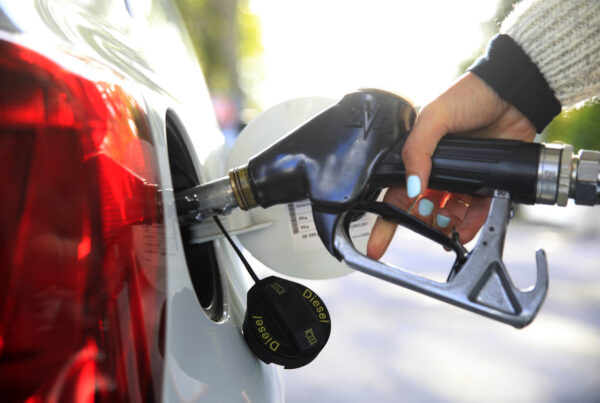With the Australian government looking to eventually mandate introduce carbon dioxide emissions standards for light vehicles, it is important to begin thinking of a greener future sooner rather than later for your fleet.
Make no mistake, the economic and environmental benefits of switching to a green fleet definitely stack out. But don’t take our word for it though.
Meridian Energy is a 100% renewable energy company, who has long been committed to sustainability, and delivering on that promise was a key factor in its journey towards a greener future.
“As part of us walking the talk when it comes to protecting the environment, we were committed to converting our fleet to electric,” Nick said.
“However, it was important for us as a leading NZ business to be able to show that the business case and financials in deciding to convert to electric stacked up.”
Central to the change is by installing an Environmental Policy for the organisation, transitioning traditional ICE vehicles to EVs and making use of mobility solutions to reduce kilometres travelled and thus overall CO2 emissions.
For their efforts Meridian Energy were awarded AfMA’s 2018/19 Fleet Environment Award, and nominations for 2020 are already open to organisations who are doing similar things within the environmental space.
Also below are some handy tips scoured from around the world of how you can make your fleet cleaner and ultimately more efficient from today onwards.
1. Study How Others Are Making Their Fleets Greener
Many commercial fleets are taking steps that will not only improve their environmental performance, but also provide an important buffer from the next oil shock or run-up in oil prices. Coca Cola, for instance, is now leading the nation and has bought 900 hybrid trucks. For a beverage fleet, hybrid technology saves money not only by saving fuel, but reducing the number of brake replacements — something that happens often when hauling tons of beverages in urban areas. Another example is Florida Power & Light, which combined hybrid technology with biodiesel (20 percent blend) in their “bucket trucks” and found they could displace 70 percent of the oil they use!
2. Develop a Green Fleet Action Plan
The “Six Rs” of diesel and overall fleet cleanup is a comprehensive matrix that helps make sense of the tremendous range of green fleet options today. Fleets can reduce fuel consumption using technology or driver behavior, refuel with a cleaner fuel, retrofit with emissions controls (or converting to use an alternative fuel), rebuild an engine with improved emissions control, repower with a new cleaner engine, or replace the vehicle, ideally to use an inherently cleaner fuel. Once understanding the “Six Rs” matrix, the fleet manager can develop a comprehensive “green fleet action plan” based on their fleet’s unique characteristics — vehicle composition, vehicle functions and short and long-term goals such as acceptable length of payback for new fuels and technologies.
3.Set a Long-Term Emissions Reduction Goal
How green is your fleet today? How much greener should it be in five years? Companies need to be asking these questions and should use greenhouse gas emissions as the KPI used to evaluate “greenness.” To develop a meaningful goal, companies will need to grapple with several key questions, including: How green can we be? What are the price, vehicle choice and operational implications of “greening?” And what steps fit best with corporate culture? Companies that tackle these questions are often very surprised by how much they can cut emissions. These questions also create the focus needed to think long-term and achieve impactful reduction goals, and not be distracted by passing trends or the popular technology of the moment.
4. Educate Your Drivers
Safe, efficient driving behavior must be a top priority in order for a green fleet program to be truly successful. This means taking steps to help drivers understand how improvements in their driving can lead to significant reductions in fuel usage and crashes. Driving behavior accounts for up to 33 percent of fuel consumption and 90 percent of crashes, and drivers can make significant improvements with the help of an in-vehicle feedback system, web-based coaching, incentives and countermeasures. Some examples of efficient driving behavior include: adhering to posted road speeds, entering and leaving turns smoothly, minimizing idling time and executing gradual starts and stops — basically, driving gently. Once fleet managers and drivers see the increased fuel efficiency they can achieve, in addition to reduced crash risk, they readily embrace in-vehicle feedback and coaching that occurs outside the vehicle. The best results come from a true partnership between drivers, supervisors and management.
5. Turn On Telematics
Businesses can drive a 10 percent reduction in CO2 emissions simply by deploying telematics. Choose a provider whose telematics are integrated with vehicle lease and fleet management solutions. We have a GE Capital Fleet Services customer that used a telematics solution to monitor the impact of idling, speeding and off-hour usage on fuel consumption and emissions. This analysis yielded actionable recommendations to lower operating costs and improve productivity, including new policies and incentives to reduce speeding and idling. As a result, the company reduced idling minutes upwards of 40 percent, in addition to a drop in speeding events, which improved the safety of its fleet.
6. Lighten Your Load
The more weight a vehicle carries, the lower its fuel economy will be. This is especially true for light duty trucks, which can feature the same space dimensions but vary significantly in gross vehicle weight rating (GVWR), towing or payload capacity, and other options. In addition to getting poor mileage, if a vehicle is regularly overloaded, the frequency and cost of repairs for axle bearings, tires, brakes and other driveline and suspension components will end up costing a lot more than the money saved by purchasing the less expensive lighter truck.




















